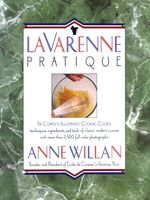Advertisement
Structure of Sugar
Appears in
By Anne Willan
Published 1989
White sugar is 99.8 percent sucrose, which is a simple carbohydrate produced by all plants during photosynthesis. Sucrose is composed of two sugars in equal amounts: glucose (also called dextrose, corn or grape sugar) and fructose (also called levulose or fruit sugar). In white sugar, glucose and fructose naturally cling together in a uniform pattern to form sugar crystals. In honey and syrups, glucose and fructose exist in unequal proportions, which inhibits crystallization. Therefore, adding any sugar other than sucrose (for example corn syrup, liquid glucose or honey) to a white sugar (sucrose) syrup interrupts the uniform pattern and helps to prevent the formation of crystals. Similarly, the addition of acid ingredients such as lemon juice or cream of tartar will discourage crystallization by causing the sucrose to break down into glucose and fructose—a process called inversion. Commercially-produced inverted sugar can be bought in the form of a white paste, sold at specialty baking shops. (It cannot be substituted directly for white sugar.)

